How To Grow Watermelons
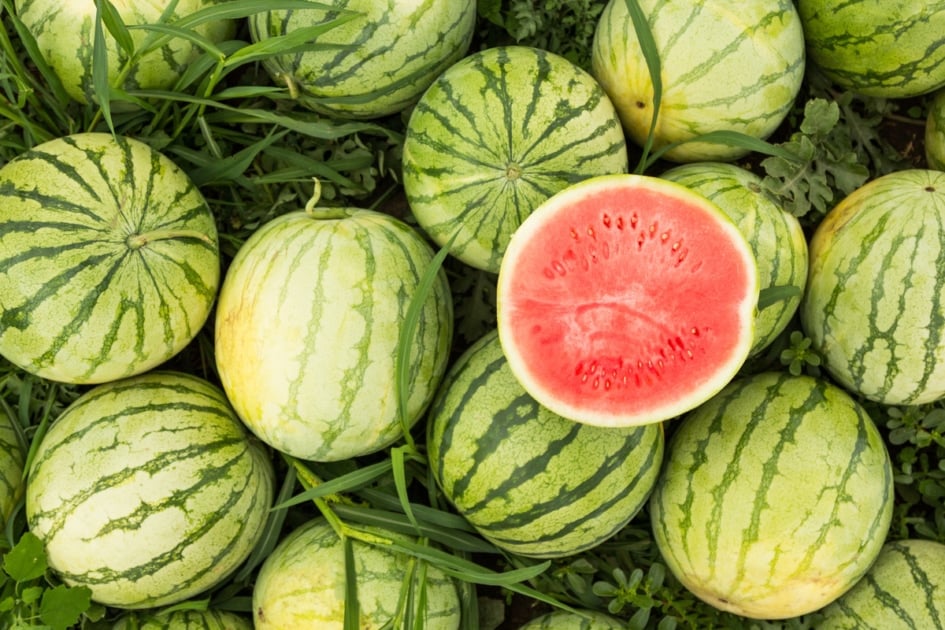
Watermelon can be trickier to grow than its close relatives: cucumber and squash. But a combination of warm soil, steady moisture, and proper fertilization can lead to sweet success. Here are some important tips.
Getting Started: Two Methods
1) Indoor Preparation & Transplanting
- Sow two watermelon seeds per pot three weeks before date when soil is expected to be over 60 degrees.
- Thin to a single seedling by cutting off the second instead of pulling it out.
- Transplant once 2-3 true leaves emerge to minimize transplant shock. Note: The first set of leaves that emerge from the seed are the cotyledons, or seed leaves, while the second set of leaves are known as “true leaves,” which can perform photosynthesis.
2) Direct Seeding Outdoors
- To direct seed: sow watermelon seeds 1 inch deep after last frost, when soil temperature is over 60 degrees Fahrenheit.
- Plant 3 or 4 seeds per hill (as in a cluster of seeds that can be mounded slightly, for drainage—though this is not required).
- Place seed clusters 18 to 24 inches apart, rows 6 feet apart, with more space between hills for larger varieties.
- Thin hills to 2 or 3 seedlings after true leaves emerge.
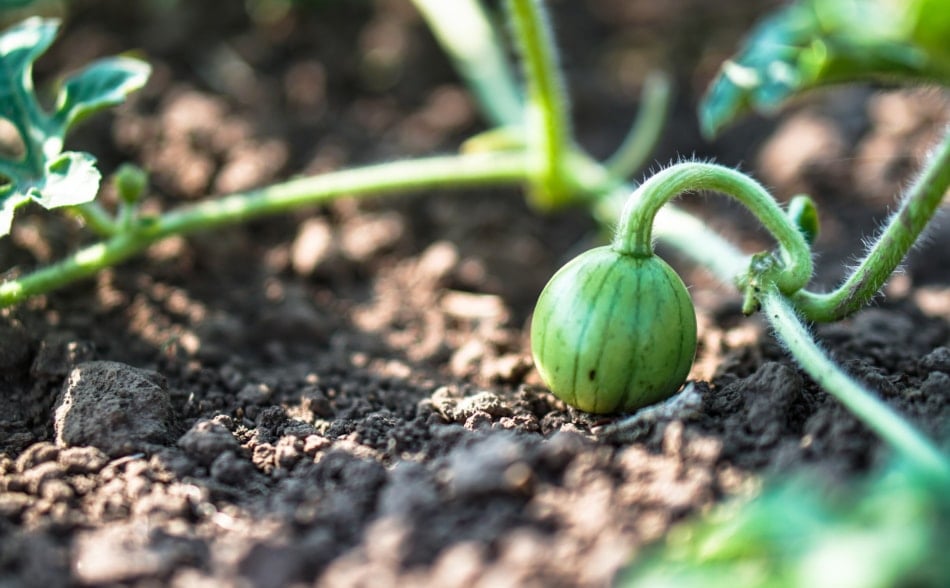
Water
Watermelons require consistent soil moisture for best fruit growth, approximately 1 inch of water per week. Drip irrigation provides the most consistent method to maintain moisture levels. Too much water in last week before harvest will result in watermelons with bland flavor.
Soil
Watermelons prefer to grow in well-drained, fertile soil, amended with compost or composted manure. Neutral or slightly alkaline soil with a pH of 7.0. Here’s how to check the pH of your soil.
Light
Watermelons require full sunshine.
Fertilizer
Add 1 to 2 tablespoons of a complete fertilizer with a nitrogen-potassium-phosphorous ratio of 4-8-5 or 6-10-10, per hill before planting watermelon. Good fruit development requires low nitrogen and high potassium and phosphorous. When the vines begin to run, add more fertilizer about 6 inches away from the roots and a couple of inches deep. This method of adding fertilizer is known as “side dressing.” Side dress again when blossoms appear.
Common Diseases & Pests
Powdery mildew, downy mildew, striped cucumber beetle, and aphids.
Harvesting
Harvest dates depend on the variety of watermelon. Larger fruit requires a longer growing season. Watermelons will not ripen after being picked so it is crucial to determine that the melon is ripe by combining several indicators of ripeness:
- The curly tendril near the fruit stem turns brown and dry.
- The surface of the fruit turns from glossy to dull.
- The ground side of the watermelon turns to yellow.
- Tapping or knocking on the fruit produces a dull thump sound.
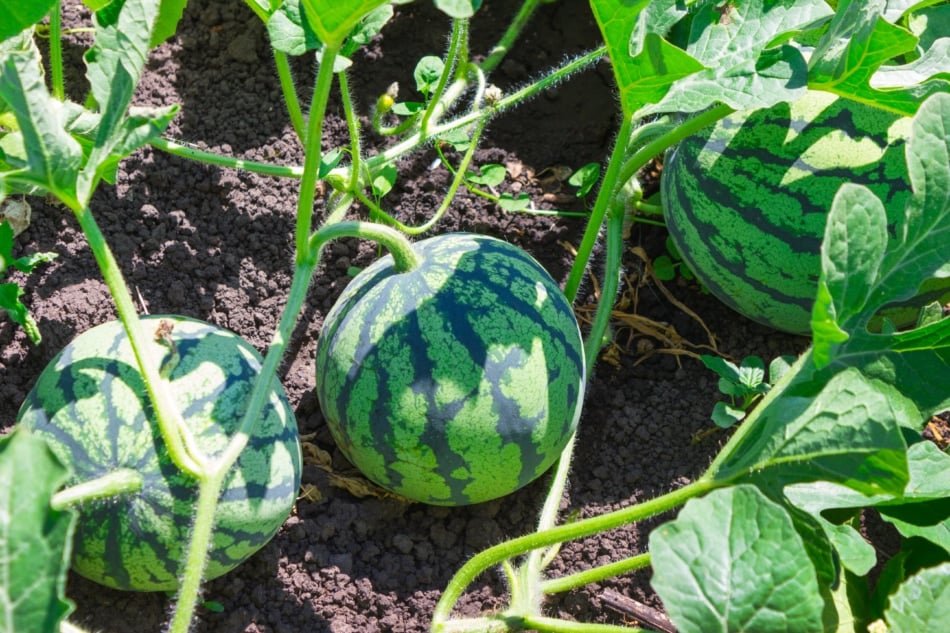
Additional Notes
Black or solar plastic mulch can help warm the soil for earlier planting in colder climates. Plastic mulch or organic mulch, such as compost or weathered straw, also helps retain moisture and suppress weeds. Row covers, especially in northern climates, can help maintain warmer temperatures early in the season and protect seedlings from insects.
Seedless watermelons, known as “triploid watermelons,” are harder to grow. They require precise temperature and moisture levels in the germination stage and close monitoring of nitrogen levels in the growth stage. Triploids also require a seeded (or diploid) variety planted alongside the row to pollinate its blossoms.
Have you tried growing watermelons before?
What are some challenges that you faced?
Let us know in the comments below!

Janine Pineo
Janine Pineo has been gardening all her life in Maine and writing about it for more than two decades. More of her writing can be found on her website, GardenMaine.com.



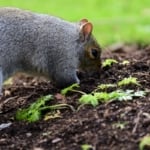

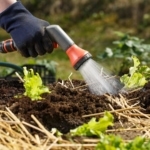
We have had a hard time growing watermelons as they never get a good size. We are in 7B and 8A region. We purchase many varieties and have had no real luck. So, I went to my local feed store, and I noticed they only carried two varieties of watermelon. That is the Jubilee and Congo watermelon I am going to try the Jubilee this next growing season and if they work out, we will stick with them.
One issue /i think is I was also inconsistent at watering them. reading the article above I know that was one mistake I made.
We live in very rural Southern Illinois. 2 years ago I decided to plant watermelons as we’d had great success in years past. I went out each day in search of the first little fruit appearing. I planted 15 plants and could hardly wait for them to mature. When most of the plants had fruit about the size of tennis balls was I surprised to go out one morning and not one plant remained. We have deer, raccoons, and other assorted wild critters on our property. We never did find out what had eaten all our plants but I hope they enjoyed them.
Lynda,
Uggh that is so frustrating! Critters seem to love our gardens. Will you try again this year? There are some natural ways to try to keep these pests away – including commercially purchased scented things you spray that smell awful but work. Good luck!